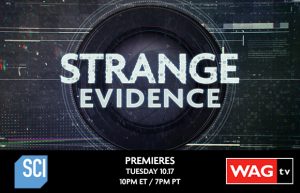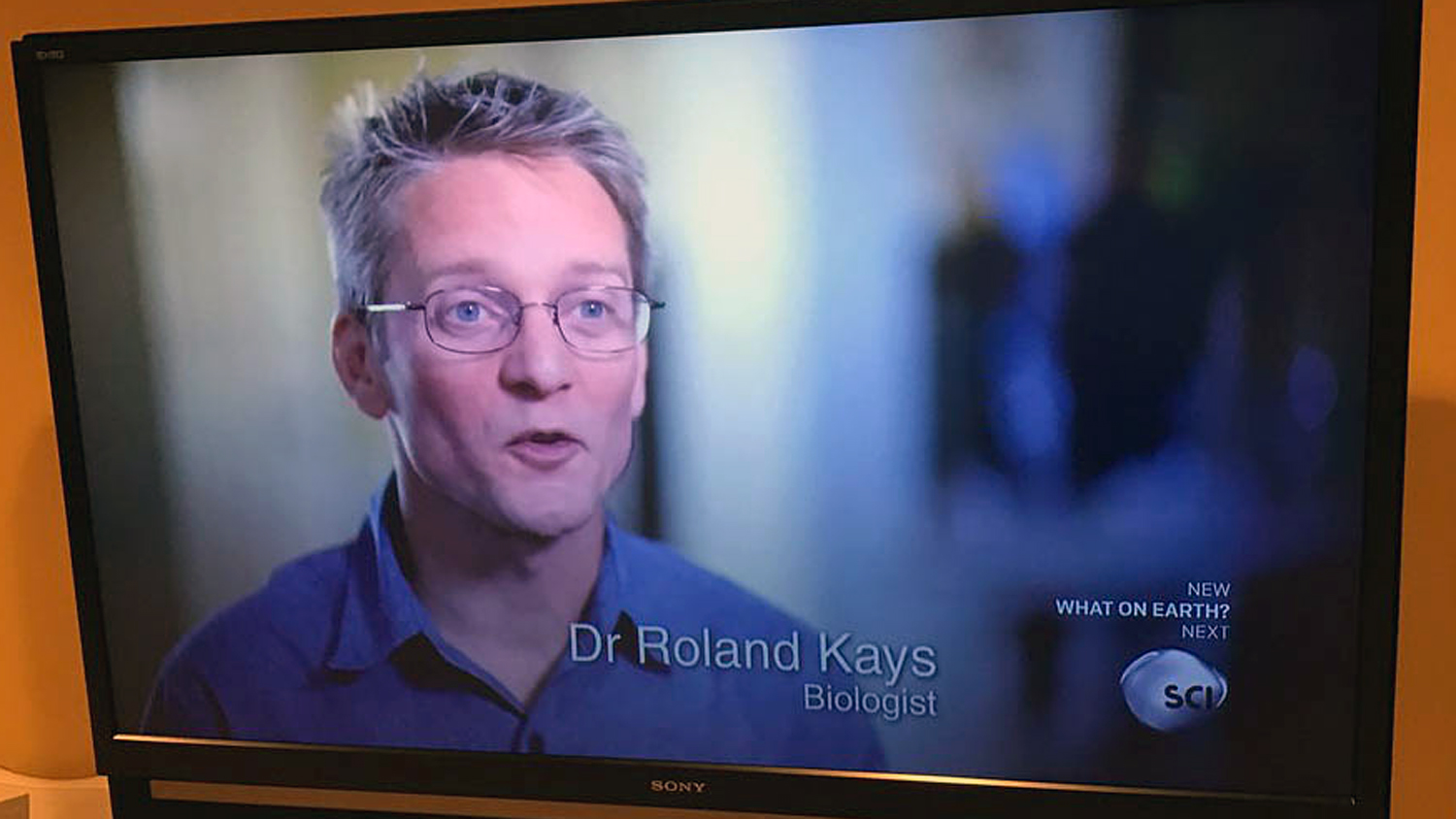NC State biologist Roland Kays is comfortable with cameras, whether he’s tracking wildlife remotely or giving interviews to share his expertise and enthusiasm for science.
Kays, a research associate professor in NC State’s College of Natural Resources and zoologist with the North Carolina Museum of Natural Sciences, appears in two Tuesday night TV shows that premiered Oct. 17 on Discovery’s Science Channel. “What on Earth?” (now in its fourth season) and the brand-new program “Strange Evidence” explore mysteries captured on camera. Although all sorts of explanations are considered, guest experts find the science behind unusual satellite images for “What on Earth?” or remote camera footage for “Strange Evidence.”
Stephanie Schuttler, a postdoctoral researcher in Kays’ lab, also appears in “What on Earth?” as does NC State alum, author and ant expert Eleanor Spicer Rice.
Spoiler alert: One of mysteries on the premiere of “Strange Evidence” involves a mysterious creature filmed in Raleigh’s sewers.
We asked Kays about his experiences working with the shows and what he was hoping to accomplish.
How were you selected to be part of “What on Earth?” and “Strange Evidence” on Discovery’s Science Channel?
Through my work making videos with Rob Nelson at “Untamed Science” I got invited to help the production company WAG TV do a “clips show,” where experts comment on existing footage. I think the first show was a bunch of weird animals for a National Geographic show. Later, WAG developed “What on Earth?” and invited me to join as one of their science commentators. “What on Earth?” has been one of Science Channel’s most popular shows, and we’ve done a few seasons. “Strange Evidence” is a similar show, new this season, but using closed-circuit (CCTV) or remote camera footage.
How have you used satellite imagery and CCTV techniques in your work?
We use this kind of data all the time, with remote “camera traps” out in the woods to capture images of animals. We then relate that animal data to information from satellite imagery to try to determine which factors affect the abundance and distribution of animals. For example, we found connections with forest cover and bobcat distribution.

As a biologist, why did you choose to take part in a show like “Strange Evidence” where some of the ideas discussed are a bit out there – including theories involving aliens?
I love both these shows as examples of hypothesis testing – they find some mystery and then propose a bunch of possible causes. Some of these are absurd, like aliens or nuclear mutants, but these are also fun. We then evaluate the evidence and rule out the unlikely answers, usually ending with a reasonable conclusion.
Why is it important for scientists to make an effort to discuss their work with the public and to bring it to a level that kids and non-scientists of all ages can understand?
More than ever, people need the ability to evaluate the legitimacy of information. What is a fact? What is news and what is fake news? Science provides a proven framework for doing this. This scientific method comes second nature to professional scientists, who have been trained in this way of thinking and do it every day, but it can still seem foreign to others.
Can you give us any behind-the-scenes stories about what the experience of taping for national programs is like?
Finding quiet locations can be hard. They usually rent a house nearby and we film there, but you never know what noises are going to show up and interrupt the shoot. One time there was a frog in a pond nearby that nearly ruined the shoot. Another time we had to take a break to let the neighbor finish mowing the lawn. The worst was when they booked a hotel near the airport and we had to pause for every passing flight. (They now avoid the airport!)
Any advice for scientists who are camera shy?
Rob Nelson at “Untamed Science” once told me, “The camera steals 30 percent of your energy.” And he’s totally right. To engage with the video audience, you really need to ramp up your enthusiasm. It can feel strange doing this, maybe even feel stupid or slightly artificial when you’re trying to force the energy, but when you see the results on the screen you realize it’s better. You usually only have a few seconds or minutes on screen. All of us scientists are passionate about our work. We just need to channel that out and into the camera for our brief moment. There’s nothing worse than the scientists who seem bored with their own work.
- Categories:



